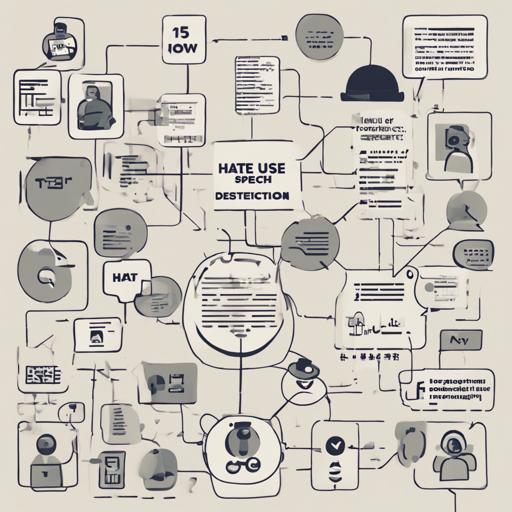In today’s digital age, the ability to identify hate speech quickly and accurately is crucial. Enter HaT5, a fine-tuned model of T5 (base), adept at classifying Tweets into hate/offensive (0) or not (1). In this article, we will explore how to use the HaT5 model for detecting hate speech, along with troubleshooting tips to ensure smooth functionality.
Getting Started with HaT5
To utilize the HaT5 model, follow these simple steps:
- Install the required packages.
- Load the appropriate model and tokenizer.
- Input your Tweet for classification.
Step-by-Step Instructions
Here’s how to implement HaT5 in Python:
python
from transformers import T5ForConditionalGeneration, T5Tokenizer
import torch
# Load the model and tokenizer
model = T5ForConditionalGeneration.from_pretrained('sana-ngu/HaT5_augmentation')
tokenizer = T5Tokenizer.from_pretrained('t5-base')
tokenizer.pad_token = tokenizer.eos_token
# Input your Tweet
input_ids = tokenizer("Old lions in the wild lay down and die with dignity when they can't hunt anymore. If a government is having teething problems handling aid supplies one full year into a pandemic, maybe it should take a cue and get the fuck out of the way?", padding=True, truncation=True, return_tensors='pt').input_ids
# Generate prediction
outputs = model.generate(input_ids)
pred = tokenizer.decode(outputs[0], skip_special_tokens=True)
# Display prediction
print(pred)
Understanding the Code: An Analogy
Imagine HaT5 as a skilled librarian in a vast library filled with countless books (i.e., Tweets). When you give the librarian a specific phrase (the input Tweet), they quickly scan through the stacks to determine whether the content is harmful or benign (classifying it as 0 or 1). Each step of the process—from loading the library (model) to inputting specific requests (Tweets)—ensures the librarian can perform their task efficiently and accurately.
Troubleshooting Tips
While using HaT5, you may encounter some challenges. Here are a few troubleshooting ideas:
- Model fails to load: Ensure you have a stable internet connection, and check if the model name is correctly spelled.
- Inconsistent predictions: Ensure that your input text is well-formed and does not contain excessive noise (slang or emojis) that might confuse the model.
- Unexpected errors from PyTorch: Verify that you have the latest version of PyTorch installed.
For more insights, updates, or to collaborate on AI development projects, stay connected with fxis.ai.
Conclusion
HaT5 is a powerful tool for combating online hate speech by accurately classifying Tweets. By following the steps outlined in this guide, you can harness the potential of this model to contribute to a safer online environment.
At fxis.ai, we believe that such advancements are crucial for the future of AI, as they enable more comprehensive and effective solutions. Our team is continually exploring new methodologies to push the envelope in artificial intelligence, ensuring that our clients benefit from the latest technological innovations.

